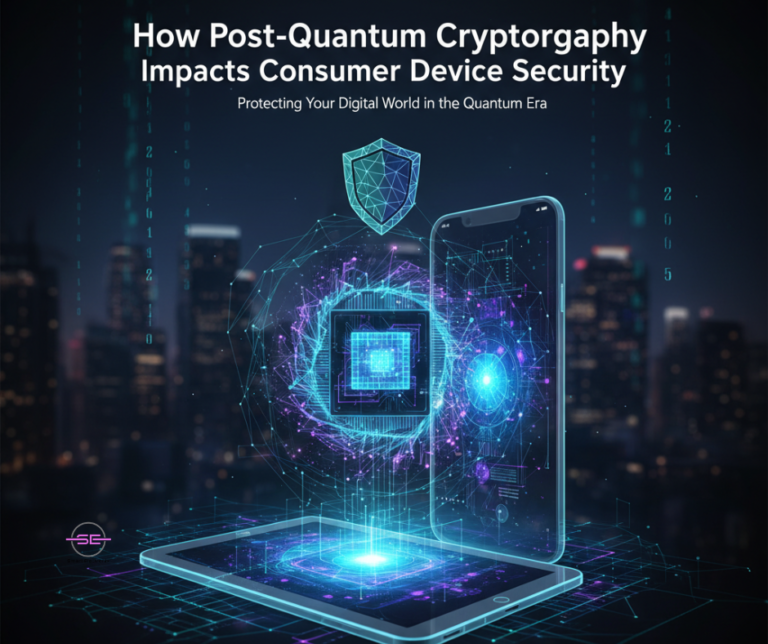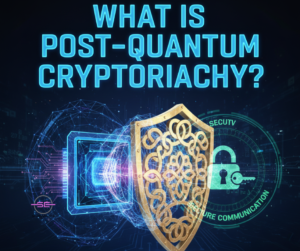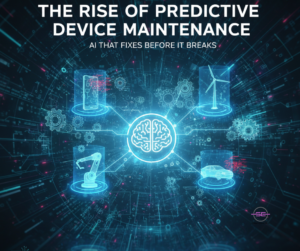
The Next Frontier of Digital Security
As technology evolves, so do the threats that challenge it. In 2025, cybersecurity experts are sounding the alarm on one of the most profound shifts in digital safety — the rise of quantum computing. This revolutionary technology promises to solve complex problems at lightning speed but also threatens to break the encryption methods that protect our phones, laptops, and connected devices.
This is where Post-Quantum Cryptography (PQC) comes in — the new armor designed to protect the digital world against quantum-powered cyberattacks.
At Smart Electronix, we’re not just about repairing and upgrading your devices; we care about the technology that keeps your data and privacy safe. So, let’s explore how PQC is reshaping consumer device security and what it means for everyday Australians.
Understanding the Quantum Threat
Traditional encryption — like RSA and ECC — is what keeps our online transactions, passwords, and communications secure. These systems rely on mathematical problems that would take classical computers centuries to solve.
However, with quantum computing’s immense processing power, these same problems could be cracked in minutes. This means that everything from your smartphone data to your home Wi-Fi could be vulnerable once large-scale quantum computers become widely available.
Experts call this potential danger the “Quantum Apocalypse” — not because it’s science fiction, but because it could render current encryption methods useless overnight.
What Is Post-Quantum Cryptography?
Post-Quantum Cryptography (PQC) refers to a set of encryption algorithms designed to resist attacks from quantum computers. These algorithms aim to future-proof digital security by making encryption stronger and more complex, even for quantum-level decryption attempts.
The goal is simple: ensure that no matter how advanced computing becomes, your private data stays private.
In 2022, the U.S. National Institute of Standards and Technology (NIST) began standardizing PQC algorithms, and by 2025, companies around the world are integrating them into devices, networks, and cloud infrastructures.

How PQC Impacts Consumer Devices
1. Enhanced Smartphone Security
Smartphones today are mini-computers, holding personal data, payment information, and sensitive files. With PQC, manufacturers can build encryption directly into device firmware, ensuring even quantum-resistant protection for your communications and biometric data.
In simple terms: your Face ID, banking apps, and encrypted chats could soon be protected by post-quantum encryption.
2. Safer Smart Home Devices
From smart TVs to Wi-Fi cameras, Internet of Things (IoT) devices are convenient but often vulnerable. PQC can help secure communication between smart devices and your network, preventing hackers — quantum or not — from intercepting or altering data.
For Australian households that rely on smart home automation, PQC will be a game-changer for digital safety.
3. Stronger Data Protection in Laptops & PCs
Businesses and individuals store massive amounts of data on laptops, often connected to the cloud. Integrating PQC ensures that this data remains encrypted even if future technologies become powerful enough to break traditional security systems.
In essence, your files, photos, and credentials stay safe not only today — but for decades to come.
4. Future-Proof Firmware Updates
Many modern devices receive over-the-air (OTA) firmware updates. With PQC, these updates can be signed using quantum-safe certificates, guaranteeing that your device is talking to a legitimate source and not a hacker mimicking a manufacturer.
Challenges in Adopting Post-Quantum Cryptography
While PQC promises next-generation security, the road to adoption isn’t without hurdles.
-
Performance Overhead: Post-quantum algorithms can require more computational power, potentially impacting device speed or battery life.
-
Compatibility: Not all current devices support PQC yet, meaning older tech might need hardware upgrades.
-
Implementation Complexity: Ensuring seamless migration to PQC standards without disrupting existing services is a challenge for developers and manufacturers alike.
Still, the benefits outweigh the risks. As more companies like Apple, Samsung, and Google explore quantum-safe encryption models, the consumer landscape will shift toward devices built for long-term resilience.

The Role of Smart Electronix
At Smart Electronix, we’re committed to staying ahead of technology trends — not just repairing what’s broken but preparing you for the future of smart security. Whether it’s upgrading device firmware, replacing sensitive components, or ensuring compatibility with next-gen encryption standards, we aim to keep your devices secure in a rapidly evolving digital environment.
We believe that every Australian consumer deserves peace of mind, knowing their tech investments are protected — not just today, but tomorrow too.
The Future of Consumer Security in a Quantum World
As quantum computing continues to evolve, Post-Quantum Cryptography is no longer optional — it’s essential. Over the next few years, expect to see major software updates, security patches, and even hardware upgrades incorporating PQC by default.
For everyday users, this means:
-
Stronger digital privacy
-
Reduced data breach risks
-
Longer-lasting device security
-
Peace of mind in a post-quantum era
In short, PQC represents a new security foundation — one that ensures your connected life stays private and protected.
Final Thoughts
The world of cybersecurity is changing fast, and quantum computing could redefine what “secure” really means. But thanks to Post-Quantum Cryptography, the digital future doesn’t have to be uncertain.
By embracing PQC, manufacturers and repair experts like Smart Electronix are helping Australian consumers navigate the next generation of digital safety — where technology predicts, protects, and prevails.
🔐 Key Takeaways
-
Quantum computing poses a major threat to traditional encryption.
-
Post-Quantum Cryptography (PQC) is designed to defend against these quantum attacks.
-
PQC will impact smartphones, laptops, IoT devices, and cloud systems.
-
Smart Electronix is dedicated to keeping Australian consumers secure in the quantum era.
